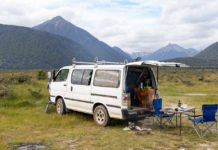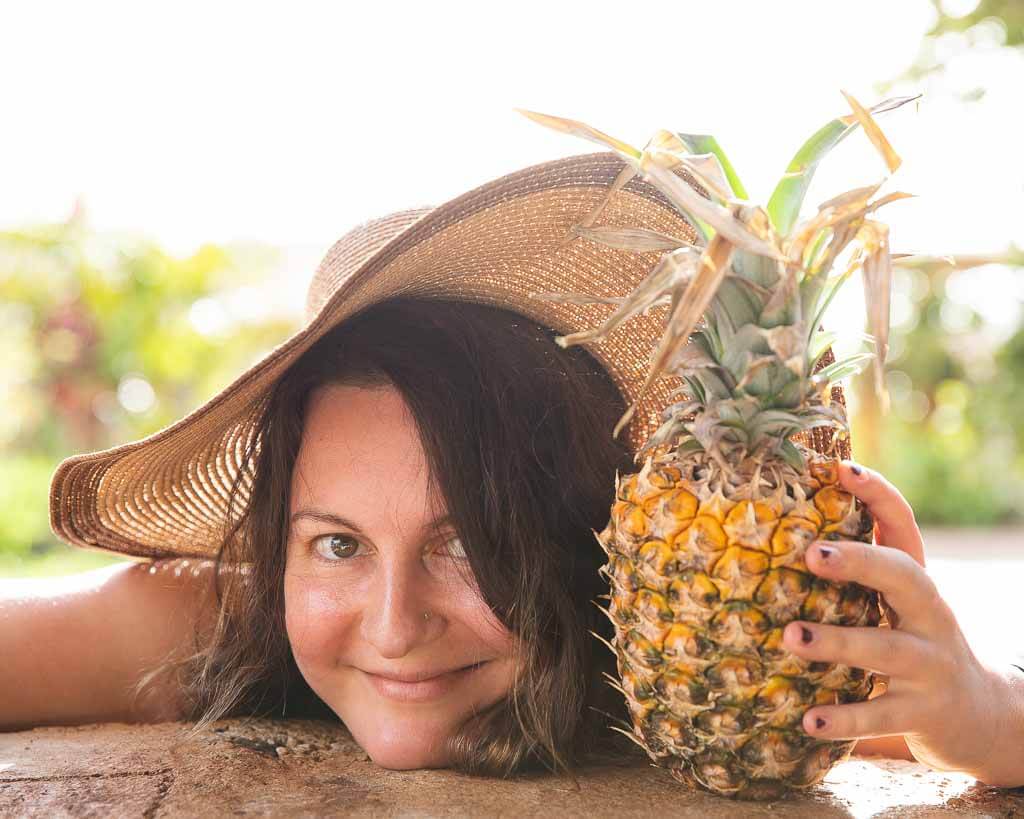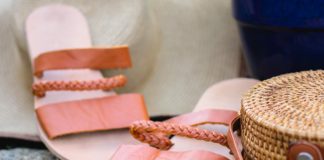Maui was originally a 24 hour layover on our way to New Zealand, but my boyfriend didn’t get his working holiday visa in time for our trip. We found ourselves stuck on a lush tropical island we itched to explore, while the tourist prices made us feel woozy. WWOOFing was the perfect solution!
WWOOF – World Wide Opportunities on Organic Farms – is a work-trade program. Volunteers usually get room and board in exchange for hours worked on the farm. In a nut shell, you work on a farm in Hawaii, and in return you can actually afford Hawaii!
Finding the right farm is super important to have the right experience. On the right farm, you’ll work hard, learn a lot, meet cool people, and have time to explore while having a home base and a safe and supportive community to fall back on. Read on for everything you need to know about WWOOFing on Maui, Hawaii.
Where Should You WWOOF on Maui?
At first we were totally lost when trying to pick a location on Maui. I think it’s critical to consider season and weather. On the map below, you can see that Maui has a windward side, and a side that’s blocked from the wind: the leeward side. In the winter, the wind brings in lots of rain, while the leeward side is much dryer. In the summer, the windward side is a little cooler. So decide for yourself, depending on how well you tolerate being wet, or being hot.

When is the Best Time to WWOOF on Maui?
I was there in the winter, and it was great! It felt like summer, and it only rained a couple of times on the leeward side. So I’d recommend winter, then spring and fall, and lastly summer because of the heat. However, I’m sure you start work veeeeery early in the summer, so you avoid the worst of it.
How Long Should you WWOOF on Maui?

Different farms will have different schedules, but typically there will be work days and days off, on some weekly schedule. So you’ll probably have 2-4 days off each week. Those are the days you can go explore the rest of the island, which I strongly recommend.
Keeping that in mind, you should leave yourself at least two weekends to explore, with a final weekend to pack, do laundry, and other housekeeping. That means that the minimum time I would volunteer for is three weeks.
A far as that maximum volunteer time, I talked to people who’ve been on Maui for months, and were having a great time! I would recommend trying out a farm for a couple of weeks before committing that much time, though, just to make sure it’s a good match.
How to Find A Good WWOOF Farm
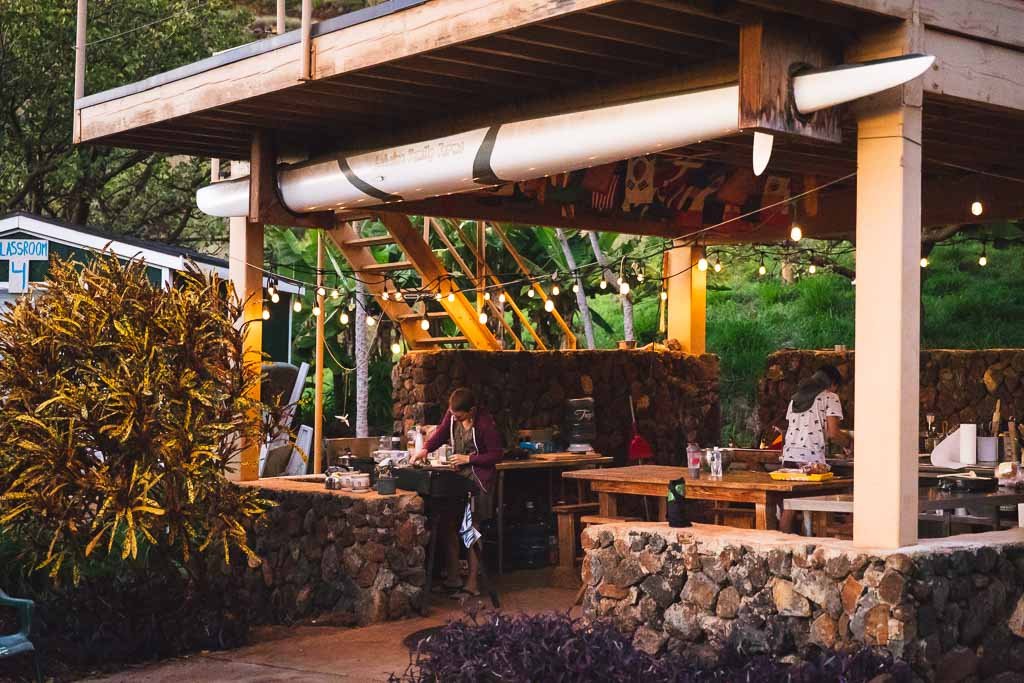
Finding a farm you vibe with is really important. Not only are you committing your time and expertise, but you’re choosing a community to be a part of, for anywhere between a couple of weeks to multiple months.
Your time is valuable, so you should carefully consider what you want out of the experience. Likewise, read what the farm has to say in their WWOOFer statement, and take it seriously: farms don’t want you to waste their time as much as you don’t want to waste yours.
Other than good reviews by past WWOOFers, here are some things to keep an eye out for:
- Look for a farm that is well-run and organized. Coordinating volunteers with varying degrees of experience and skills is a difficult task, and takes epic organization. This means that you will be provided a task and the necessary training to do it, starting from your first work day. Being able to get to work without lots of standing around, wondering what to do or how to do it, is essential to everybody not feeling like their time is being wasted.
- What helps tremendously with the point above, is having a WWOOFer coordinator, or someone directly working with the volunteers. On the farm where we volunteered, the WWOOFer coordinator was in charge of telling us what to do, and showing us how to do it. Having someone who directly dispatched volunteers was so important to the farm running efficiently.
- Clear expectations are so so important to have a good experience. I loved having a set time and schedule for work hours. I was able to give it my all during those hours, because I knew that the farm will respect my time off. You’re not signing any sort of formal contract, but I took my commitment seriously, and I expected the same in return.
- A farm that is experienced in hosting WWOOFers is going to be much more likely to be well-organized and run smoothly. They’ve had time to iron out all the kinks.
- That said, look for a farm that is current and active, and not lost any steam. Check for an updated website, or any current updates on facebook, youtube, or other social media.
- A fast response is a decent indicator of an active, well run farm.
- Rules are important! Lots of very different people living together does not end well without strict rules for cleanliness and respect.
In the end, committing to a farm is still a risk. You never know what it’s like until you just go. But knowing the things to look out for can help you mitigate that risk.
Know that you can always always just leave if something is off. Yes, you are making a commitment, but the farm is making a commitment to you to provide you with a safe and healthy environment. So please leave if you feel unsafe or taken advantage of, or even just have a bad gut feeling. Your feelings are valid, and it’s important to listen.
Review of my WWOOF farm: Lahaina Family Farm

I worked on Lahaina Family Farm for three weeks. The farm you work on can greatly affect your experience, so I’ve decided to write a quick description of the farm that’s informing most of this article.
Lahaina Family Farms is a developing farm, so a lot of the work was removing haole koa, an invasive tree that was overwhelming the property. I also worked on developing a garden. Since a lot of the work was clearing the land or preparing for future development, it wasn’t exactly what I though I would be doing on a farm. In the end, however, it was great to look back to see how much was accomplished even in the three weeks that we were there.
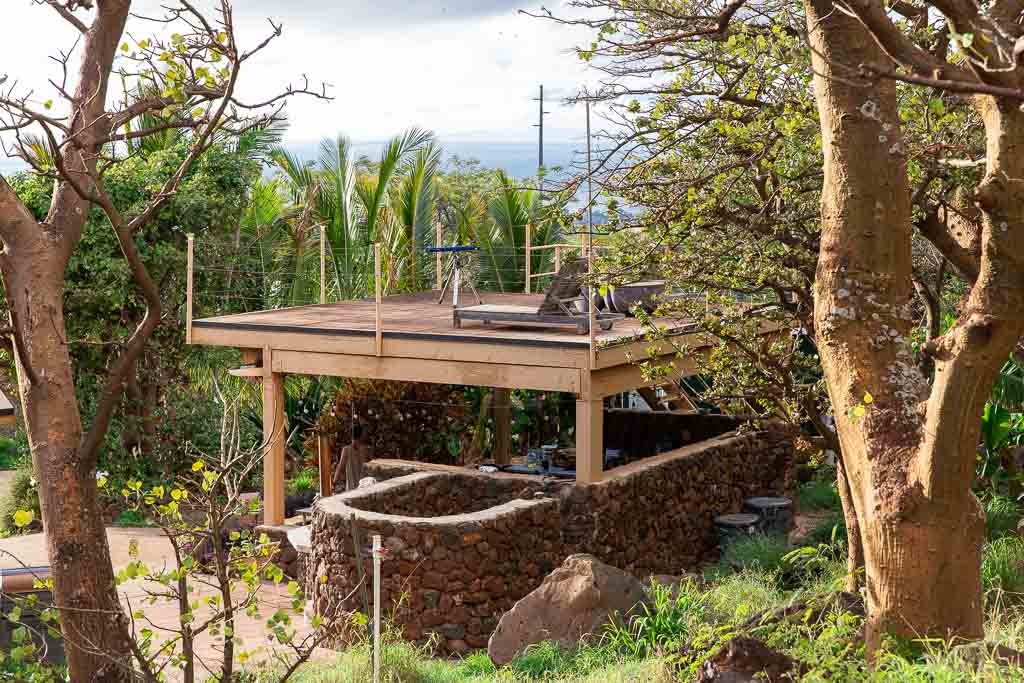
I also loved the community there: I loved all the other volunteers that we lived and worked with. In the afternoons we would cook together, and play cards in the evenings. I really felt an atmosphere of inclusion, which is so key to feeling comfortable and valued. I think that stemmed from the WWOOFer handbook: a list of rules for the farm and the community that everyone is expected to follow. Everybody read it together whenever a new volunteer arrived: it showed that everybody took the rules seriously, and was expected to be a positive member of the community.
Several people live and work on the property full time or part time. Having multiple people with different skills invested in the project really gave the farm a sense of inertia. It was exciting hearing about all the plans, even if they were for after I was gone.
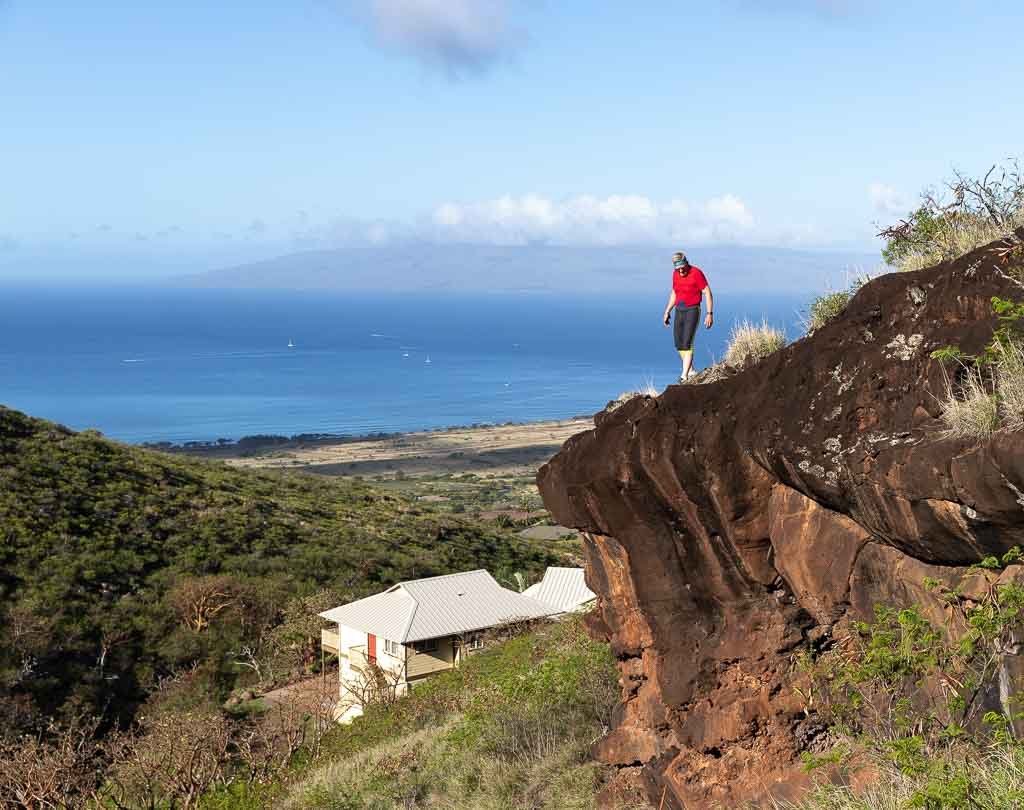
I have to be honest that there were some issues. I understand that it must be difficult dealing with volunteers who come in and aren’t serious about being there. I think that made the farm a bit jaded. There were incidents of favoritism, even though all the volunteers, in my opinion, were excited about being there and worked hard.
On the other hand, they seem to really appreciate people with different skill sets. I was able to do some photography projects for the farm during work time, and another artist spent his time on a mural. Everybody worked on the dreaded haole koa project, and mostly it was a very bonding experience.
If you’re considering Lahaina Family Farms, I would definitely still recommend it. The location is beautiful: we watched the sun setting over the ocean behind Lanai every night. There were pizza nights, I could always find a ride into town, and we even had a beach barbecue on my birthday! I had a great time, and would definitely return (when the haole koa project is done 
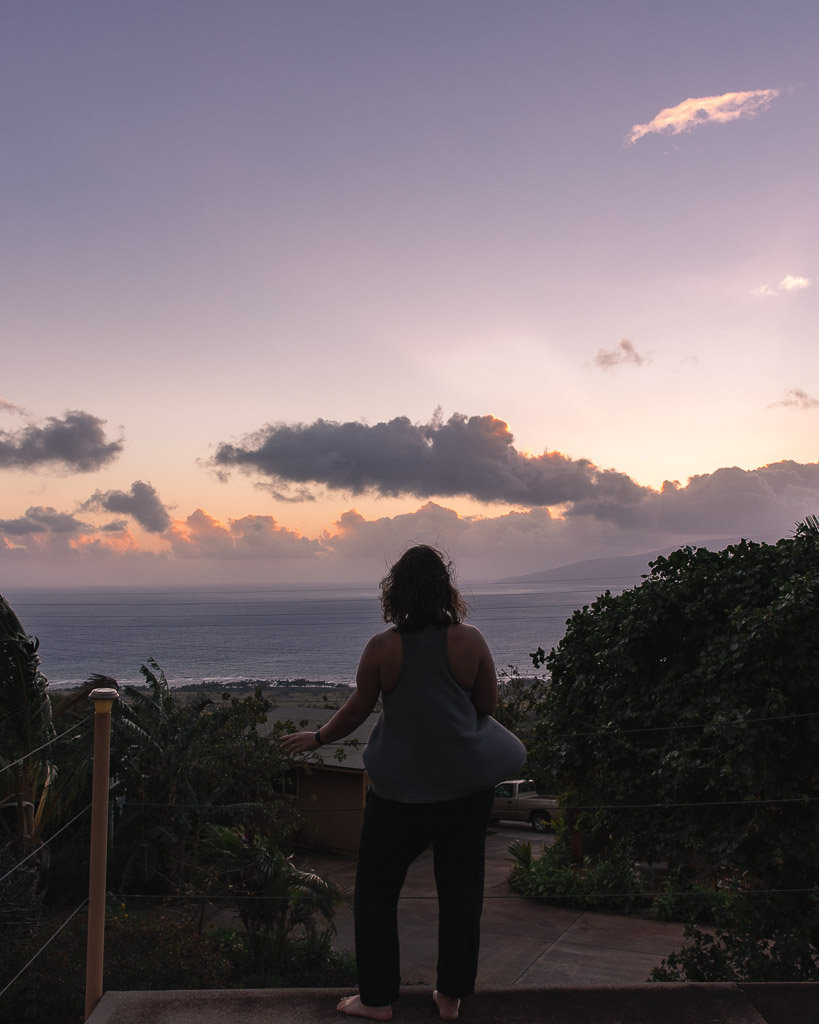
What You Get in Return: Room and Board
Make sure that the farm clearly states that it will provide room and board.
The food will likely be basic pantry necessities, but it should be enough for three very simple meals a day. Board might mean anything from tent spaces to simple housing. You should be prepared to rough it a bit. However, don’t assume anything: if you’re unsure, email the farm to clarify.
What you get out of the experience can be much more, but you should make sure that the exchange makes sense for you monetarily. WWOOFing is firstly an exchange of work for room and board. Hopefully, you will gain experience, knowledge, friendships, etc, but make sure that you will get something in return for your work.
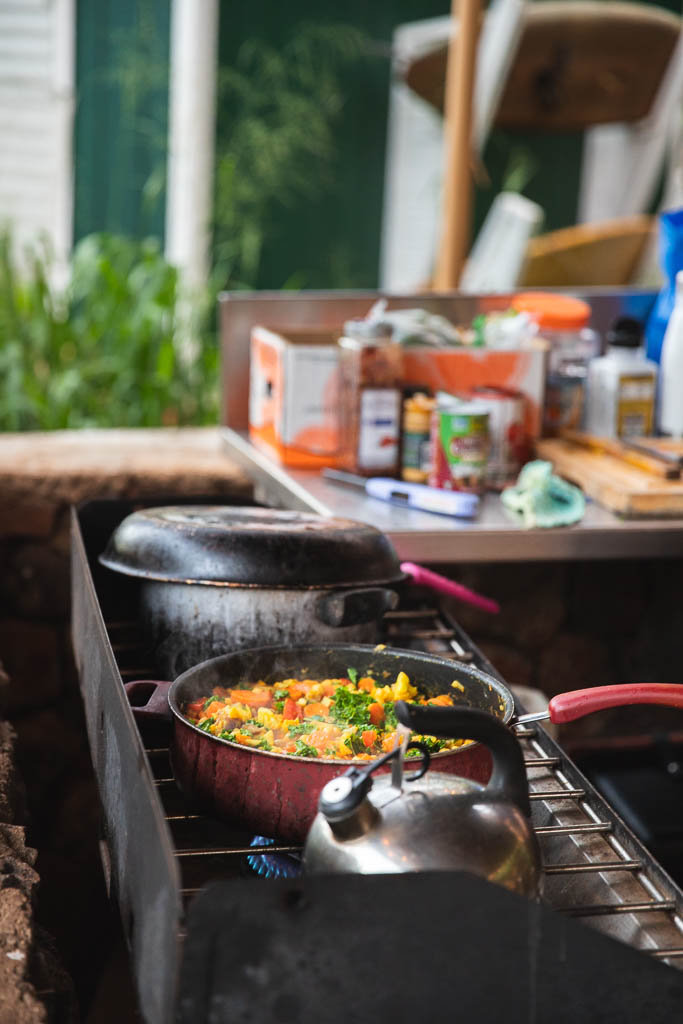
What is the Work Like?
The work is very physical. A lot of digging, lifting, cutting, raking, etc. You should be in reasonably good shape. I was pretty sore after the first couple of days, but I got a lot stronger while I was on the farm! Yay baby muscles!
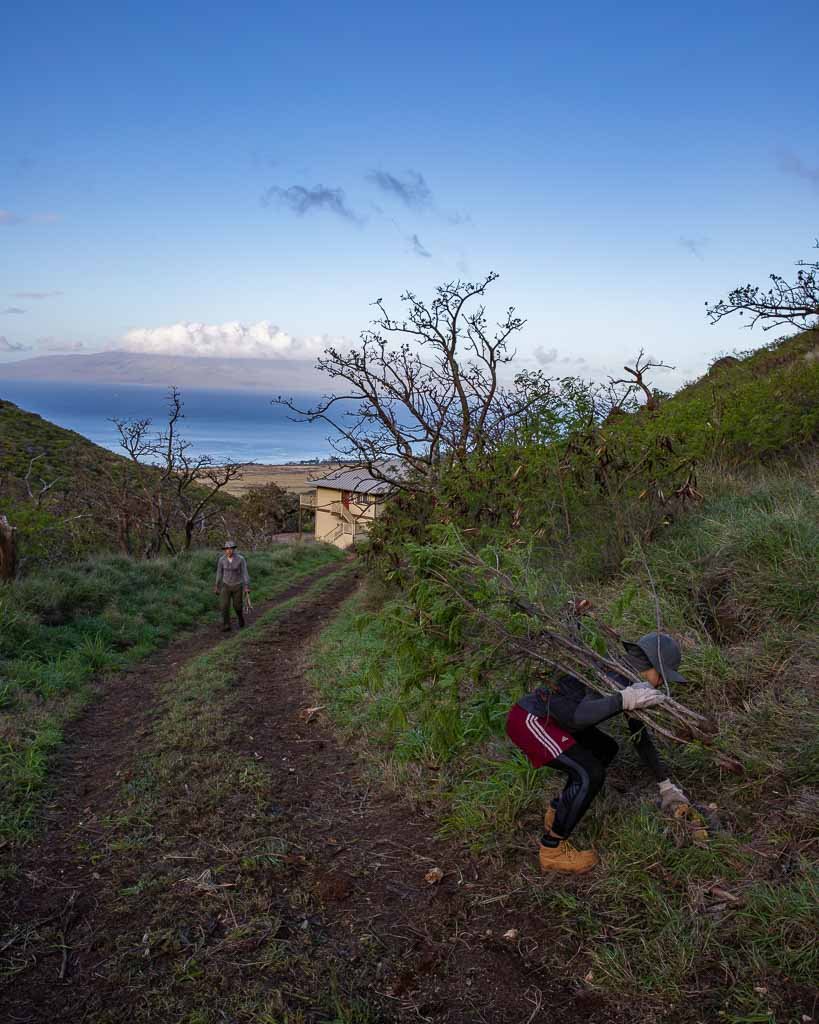
The actual work will vary greatly, depending on the specific farm. For me, I did a lot of ‘dryland restoration,’ which is a fancy word for removing invasive species. Basically, I cut down a lot of trees. It was hard work, and not always the most interesting, but it felt good to work hard with my body. After being in grad school for literally forever, working hard and actually seeing visible progress that my work yielded that day was very healing and such a welcome change.
Other things I did included working in the garden making planter beds, planting, and weeding, as well as painting, raking and cleaning the road, and making wood chips from all the trees we cut down.
How to Stay Healthy while WWOOFing

Towards the end of my second week, my lower back was in pain. I was very lucky to be on a farm that gave me less heavy work while I recover. Here’s what I suggest both to recover from and to avoid injury while WWOOfing.
- Stretch: it’s super important to stretch it out after working hard. Especially if your body isn’t used to it, all the bending over, lifting, cutting, and digging is hard on your body. Gently, daily stretching is crucial both to avoiding injury, and to nursing one back to health.
- Rest: make sure to take enough time to rest your body. Especially at first, give your body time to adjust to the work and the climate by giving it adequate rest.
- Hydrate: seriously, drink all the water! Not only are you working super hard, but the heat in itself will suck the water right out of you.
- Eat enough: get enough calories to fuel all the work you’re doing!
- Get enough sleep: make this a priority!
- Sun protection: sunscreen, hats, long sleeves, etc.
Wwoof Hawaii Packing List

- Clothes you don’t mind getting dirty
- Boots or sneakers you don’t mind getting dirty
- Long sleeves and long pants to protect yourself from scratches and the sun
- Wide brimmed hat to protect your face and neck from the sun
- Flip flops for time off
- Shorts and tanks for time off
- Swimsuit for time off
- Rain poncho
- Work gloves
- Water bottle or bladder
- Your normal toiletries
- Sunscreen
- Bug Spray
- Tent if it says so on the farm’s WWOOFer statement
- Sleeping pad and sleeping bag if sleeping in your tent
- Kindle, books, art supplies, whatever you entertain yourself with
How Much Did We Spend WWOOFing on Maui?

If you want to, you could buy only your ticket to Maui and the WWOOF USA membership. In my opinion, however, you should spend a little more to actually see Maui, and eat some local specialties. Who knows when you’ll be able to make it back?
Here’s a breakdown of our expenses for three weeks WWOOFing on Maui for two people:
| WWOOF USA Couple Membership | $65 |
| Extra Groceries | $184.68 |
| Restaurants, Cafes, Shave Ice | $97.01 |
| Work gloves, sunscreen, flip flops | $32.77 |
| Snorkel | $11.24 |
| Laundry 2x | $8 |
| Chiropractor (after I hurt my back) | $30 |
| Road to Hana roadtrip (car rental, gas, park fees, etc) | $443.54 |
| Total | $872.24 |
| Total without big road trip (our big splurge, optional) | $428.70 |
| Total money spent per person per day (yes|no roadtrip) | $20.76 | $10.20 |
Thanks to WWOOFing, we were able to deeply explore Maui, take a once in a lifetime road trip, visit a national park, camp on the beach, go snorkeling, eat poke, fresh fish, spam musubi, plate lunch, barbecue, shave ice… all for $20 a day each!
If you’re on a tighter budget, forgo the extra groceries (I just love cooking and sharing my food), eat out less, and don’t rent a car for the weekend. You can still explore the Maui that’s closer to your farm.
To save money, one weekend we took our tent and camped on the beach! We bought a snorkel at the grocery store to save on rentals, and we hitchhiked! (Locals are usually happy to give you a ride, while tourists drive on by… womp womp).
What to do on Days Off
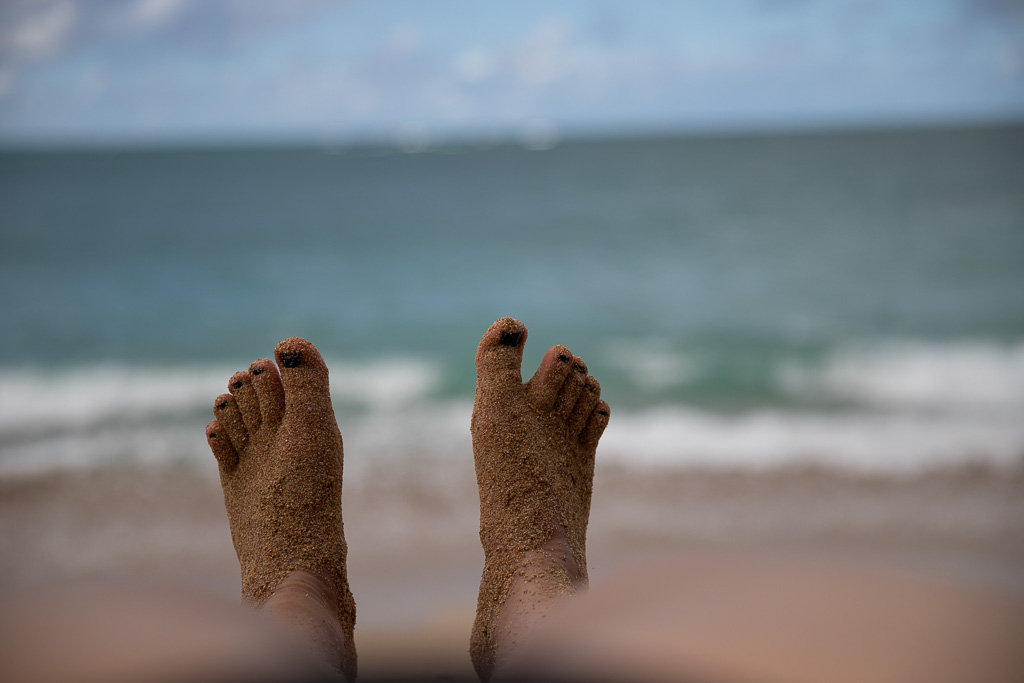
I loved working in the morning, and just hanging out on the farm in the afternoons. I rested my body, got to know the other volunteers, cooked yummy food, took pictures, and did yoga. On my weekends, however, I made sure to leave the farm.
I strongly recommend spending your days off somewhere other than the farm, even though it’s easy and convenient to just stay. It’s your opportunity to explore the island! Not only that, but you can get really cooped up living with a bunch of people, sharing bathrooms and showers, kitchen, living space… some time off the farm is crucial to reset, get a break, explore, and be able to be the best version of yourself in such a communal environment.
Camping on the beach
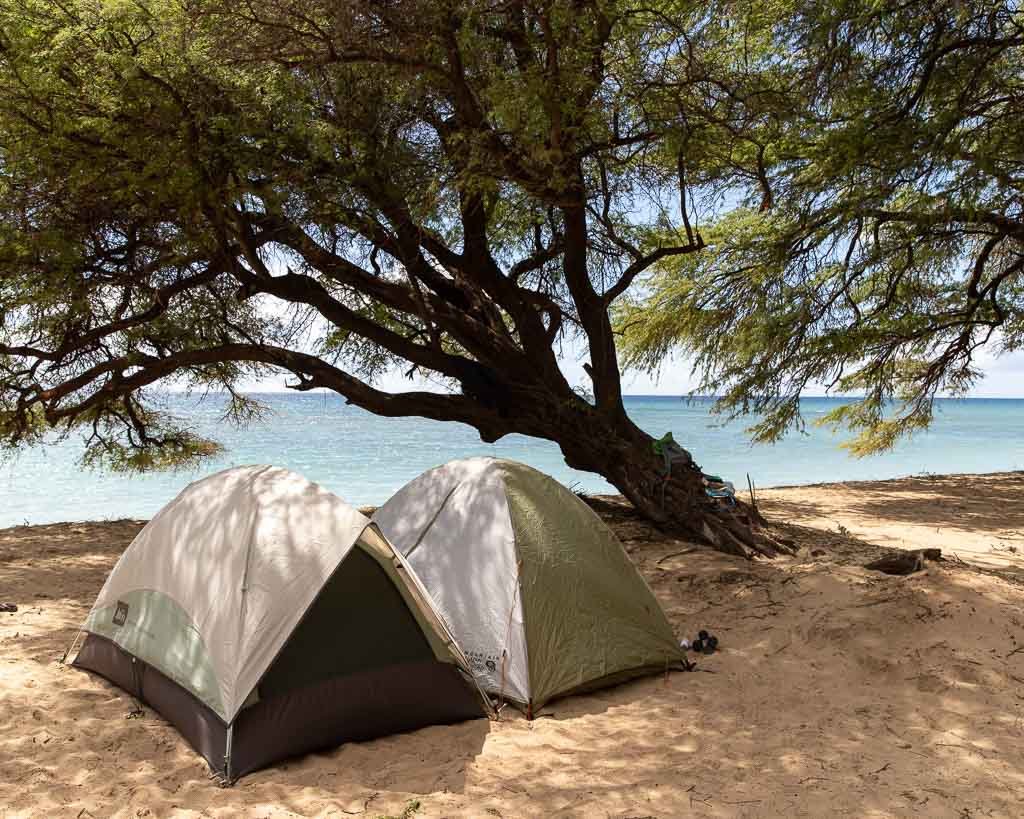
Camping on the beach is a great, cheap, and fun thing to do on one of your weekends! Here’s a great list of all the camping spots in Maui: find one closest to you, and hitchhike there! Stop by Foodland to get some groceries: bring some spam musubi for dinner and some local beer!
Snorkeling
This is a super fun and relatively cheap activity, we snorkeled a lot when we camped on the beach! Foodland is a great place to buy a cheap snorkel. This is an awesome list of the best snorkeling on Maui, but you can try it on most calm beaches!
Road to Hana
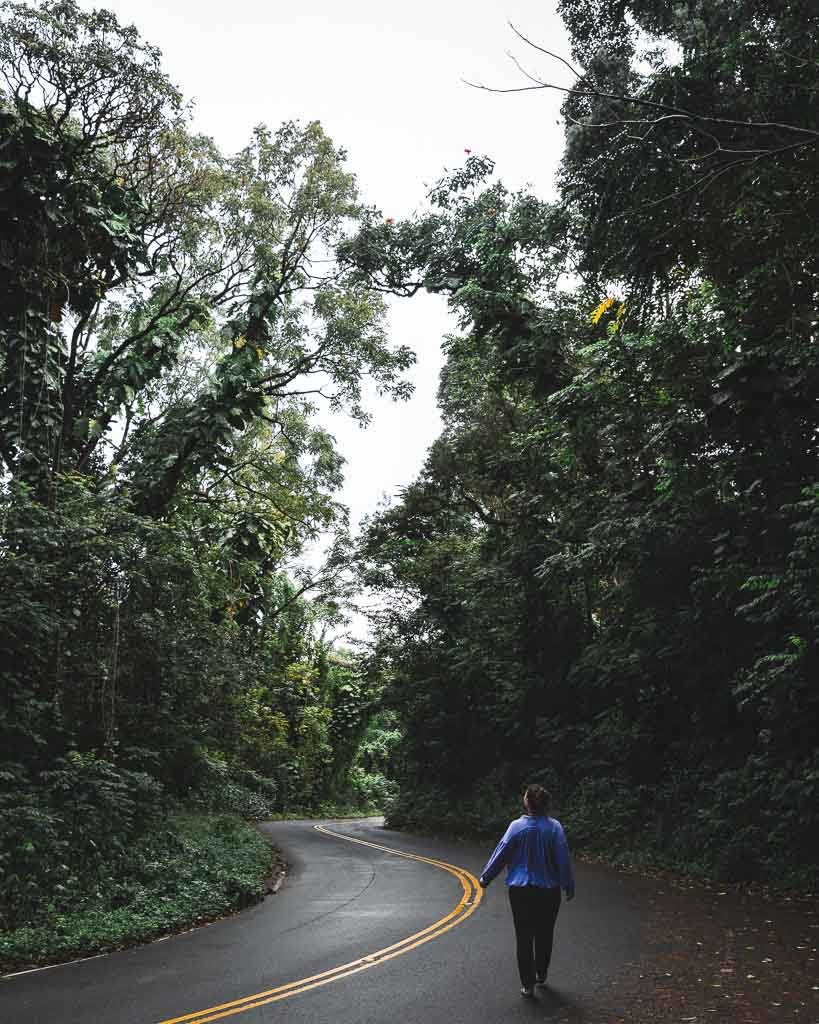
The Road to Hana is one of the best road trips in the world. The windy, breathtaking Hana Highway follows the Northeastern coast of Maui, taking you through wild thick jungle, reckless waterfalls, historic bridges, and cliffs that settle on rustic beaches. It’s absolutely breathtaking, and if you can afford to rent a car it’s an absolute must!
The road itself is the experience, so give yourself enough time and light to really see it. On the way, go see the touristy black sand beach, the (super cool and better) red sand beach, and hike up through the bamboo forest to Waimoku Falls.
The road past Hana, on the Southeast side of the island, is just as incredible. The landscape changes every ten miles, really highlighting all the different microclimates on Maui.
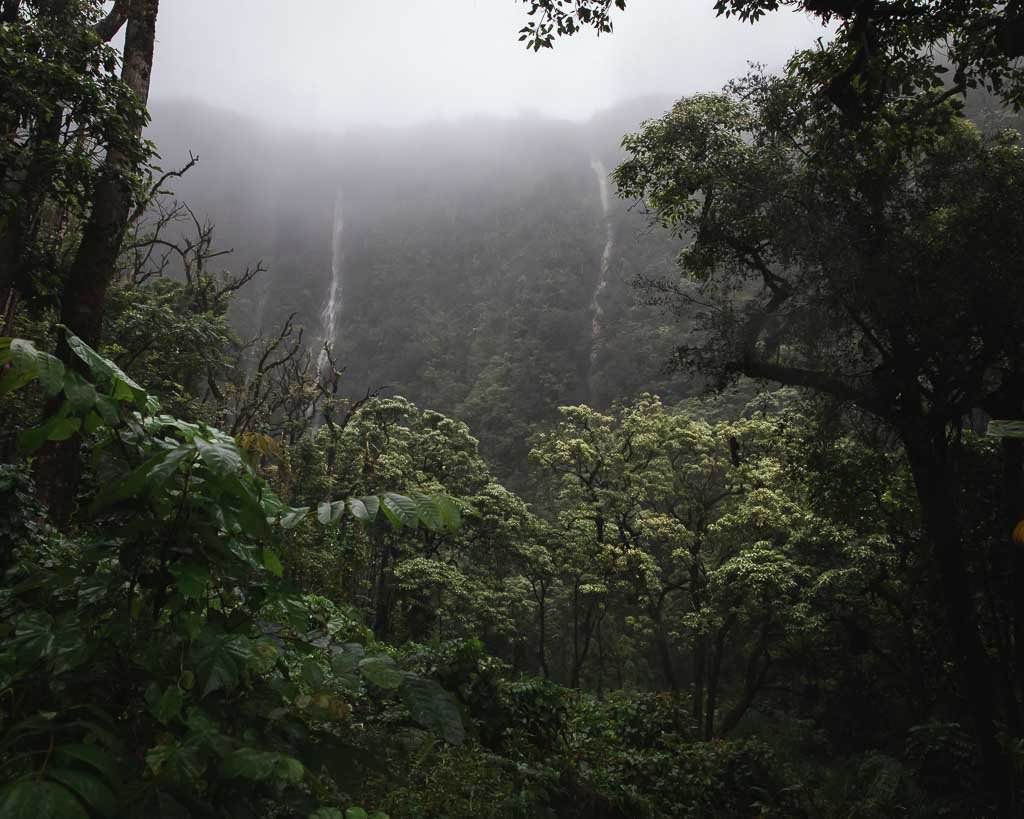
Next Time…
If I had more time, I would have really enjoyed going whale watching (winter is whale season. We could see them splashing and jumping around from land!), I’d explore Haleakala National Park way more, and I would consider booking a snorkeling tour to Molokini. This is a great list of all the best things to do on Maui.
WWOOFing on Maui: Conclusion

I had an amazing time WWOOFing on Maui. It wasn’t something I planned for at all, but maybe that’s what made it such an adventure! I was able to live on Maui for three weeks, and explore the island deeply on a budget! In addition, I got to be a part of a great community: meet and live with many very different people.
Definitely put some thought into what you want to get out of the experience, and make sure your goals align with WWOOFing. Make sure you have enough time to make the most of it, and be ready to work hard. Some of the work might not be the most interesting, and it can get repetitive. You might not get along with the people you meet. Be prepared for frustrations that come with communal living, but also be prepared to find a better environment if you’re not happy.
I especially recommend WWOOFing if you would like to heal your relationship with work. After feeling so stuck and unproductive in grad school, it felt amazing to see actual physical progress, and work hard with my body.
WWOOFing on Maui can provide you with a very cheap way to live on a beautiful, but oh so expensive island. It can get you into shape, and give you tangible, physical work, which can be very healing in our office culture. You’ll live close to nature, and in a community of people from all walks of life. If you’re searching for something along those lines, I would wholeheartedly recommend WWOOFing on Maui.









